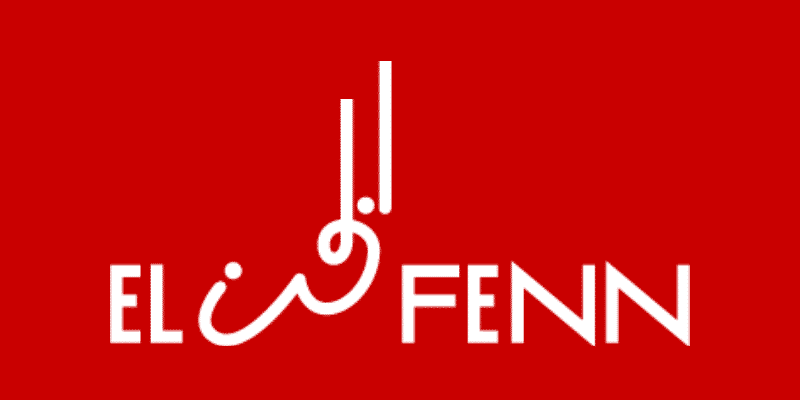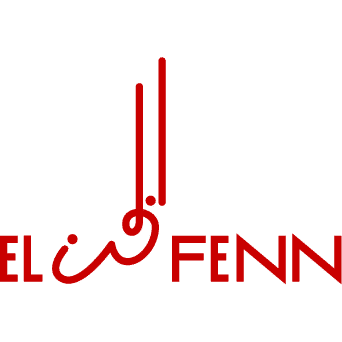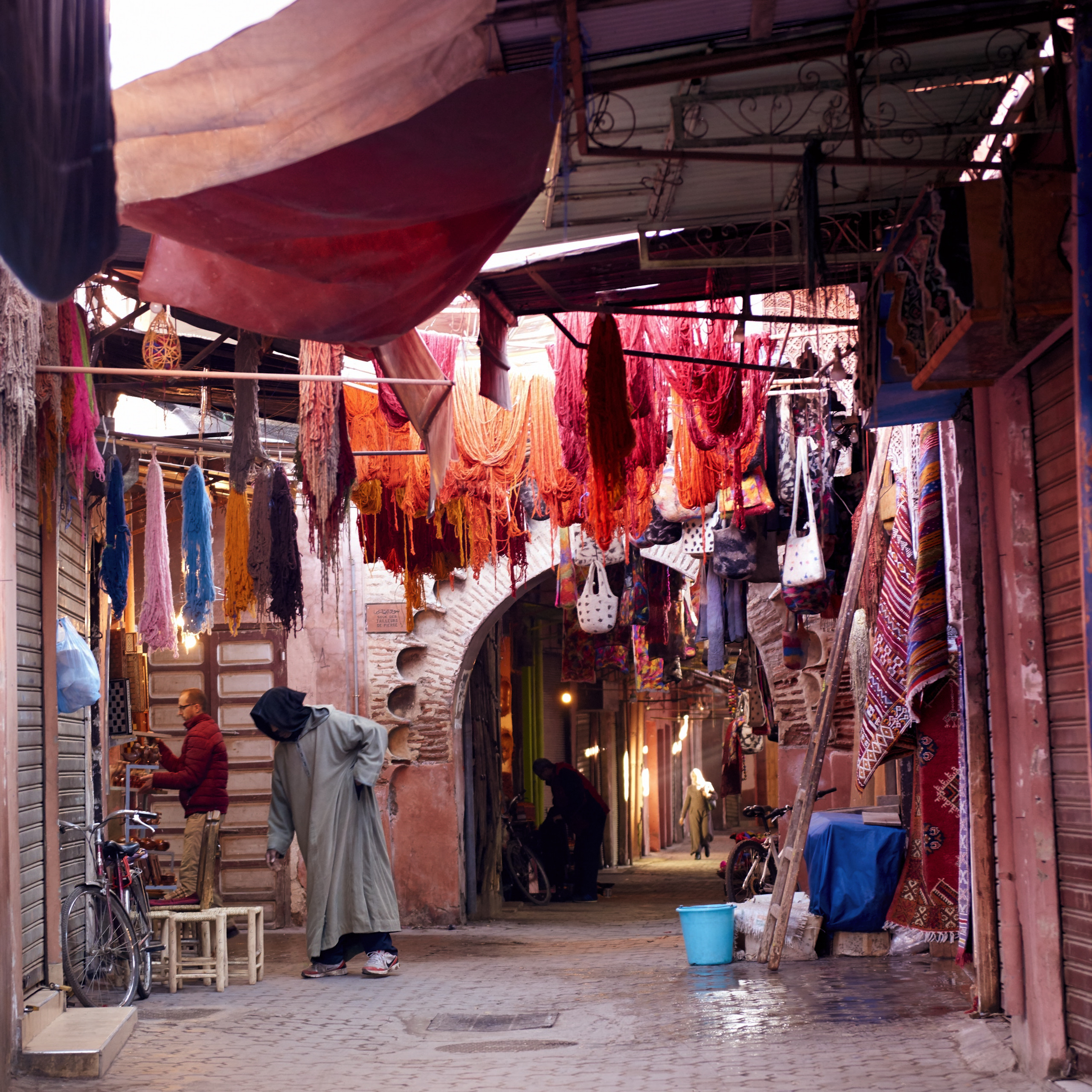
Get Your Souk On
The souk is the heartbeat of Marrakech. The busy market area forms the centre of the walled medina and it’s packed with art, crafts and everything in between. Here’s our ultimate guide.
History
Marrakech was founded in the eleventh century and there’s been a market here ever since with traders converging to buy and sell goods from the south in Africa and Europe to the north. But the souk isn’t just about commerce, it’s also a way of life that’s followed a similar rhythm for centuries. Walk the streets and you’ll be immersed in Moroccan culture.
Keep an eye out for the keyhole arches synonymous with Islamic architecture. Also, the public fountains and taps that were built after the Almoravid dynasty brought water to Marrakech via khettara – an underground hydraulic water system – in the eleventh century.
There’s also a beautiful sense of community in the souk. During prayer time for instance, open market stalls are ‘shut’ with just a bamboo cane leaning across their open frontage. Such is the sense of collectivity between the traders that they know nothing will be stolen. Hammams and mosques are also found throughout the area and, as you watch the artisans work, remember they are using skills handed down generation to generation for centuries.

How to get around
Souk streets can certainly get confusing. So if that worries you, we’d recommend getting a guide. But you never really get lost for long because there are two main arterial routes running through the souk – and both lead back to Djemaa el Fna, the main square. Plunge in and prepared to get a bit lost. It’s all part of the experience.
When to go
We’d advise heading out early: stall holders are keen to get their first sale of the day and the souk is quieter. Fridays are also less busy because some artisans don’t work on the day of prayer and everyone takes a holiday during Eid. During Ramadan, the souk stalls open later and are less active in the day but everything comes alive after the fast is broken at sunset.
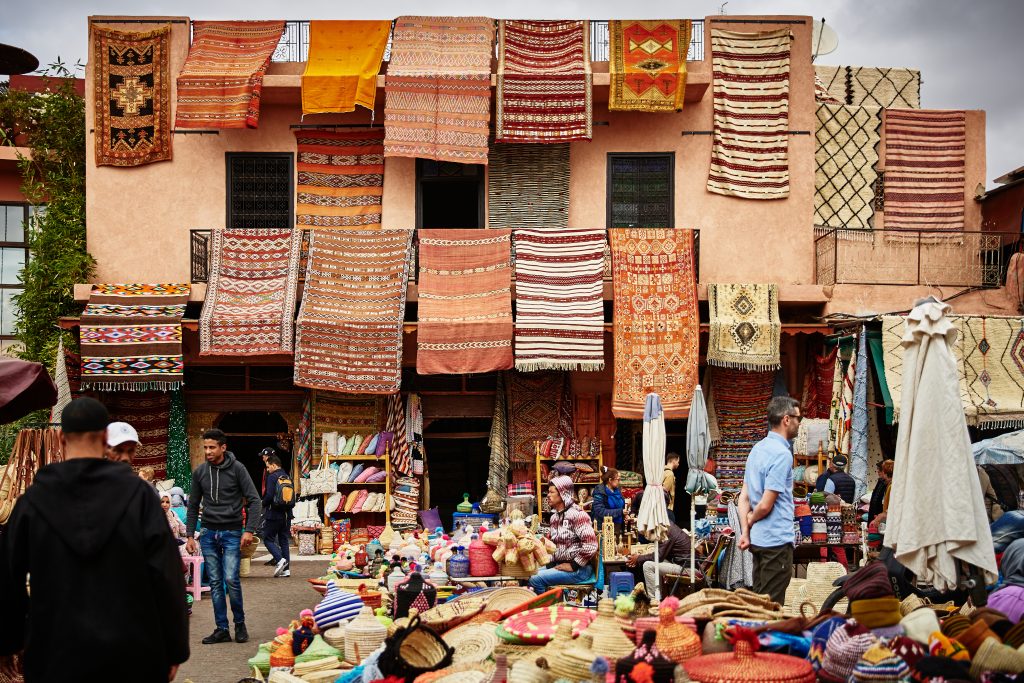
What to buy
The stalls on the two main streets running through the souk are a mix of everything from leather and textiles, to jewellery, pottery and shoes. But make sure to head off the main streets to find the artisans at work. Each section of the souk is devoted to a different artisanal skill. So there’s a wood section for instance where you’ll find artisans turning wood with their feet, or pick up a beautifully hand-crafted decorative lock in the metal work area. There are also sections devoted to shoes, carpets, pottery, musical instruments and clothes. There’s even an olive souk.
Spices are a great buy because they’re more fragrant than you’ll get in supermarkets back home.
What to see
The Secret Garden will give you a stunning idea of the beauty that lies hidden behind seemingly humble exteriors in the souk. This former palace is now home to a cafe and a huge – and beautiful – walled garden. It’s a tranquil respite from the hustle and bustle. If you only see one historic site, make sure it’s Ben Youssef Madrasa. Dating back to the mid 1400’s, the madrasa as we know it today was completed in 1595 to become one of the largest Koranic schools in North Africa. Go early or late to avoid the crowds. The Mellah area to the south of the souk is also fascinating. This is where the city’s Jewish population lived for centuries and, while many Moroccan Jews migrated to Israel, the neighbourhood they left behind is still packed with history.
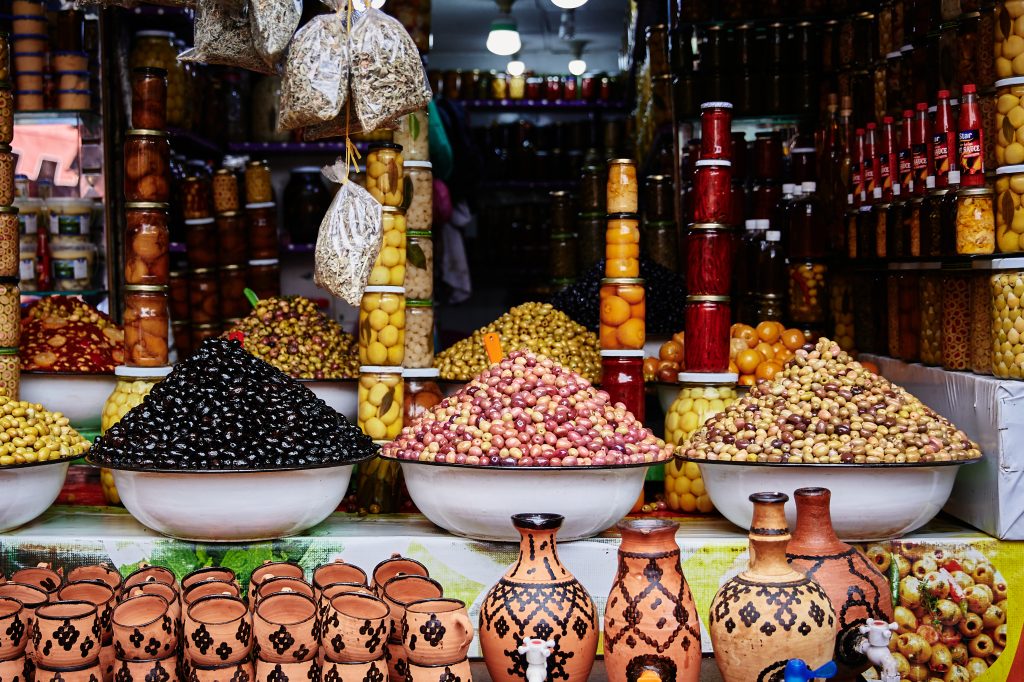
What to eat
Street food is key to life in the souk. Head into the small lanes around the metal working section at lunchtime and follow the charcoal smoke to find anything from chicken brochettes to stuffed sardines on the daily menus. As you walk the souk, you’ll also see tiny food shops with large pots filled with lentils, beans and that day’s tagine. Or, when you’ve finished a day’s sightseeing, head to the food stalls that are set up every night on Djemaa el Fna. Most are like mini restaurants serving a range of dishes but Stall 66 sells just one thing: rolls stuffed with an insanely good mix of fluffy potato, boiled eggs, soft cheese, harissa, cumin, olive oil and salt. Wash one down with a herb tea. Delicious.
